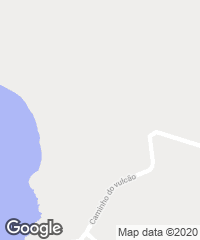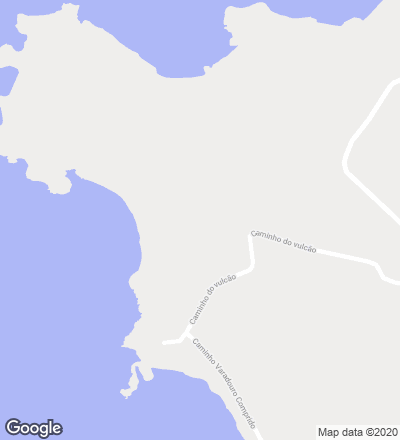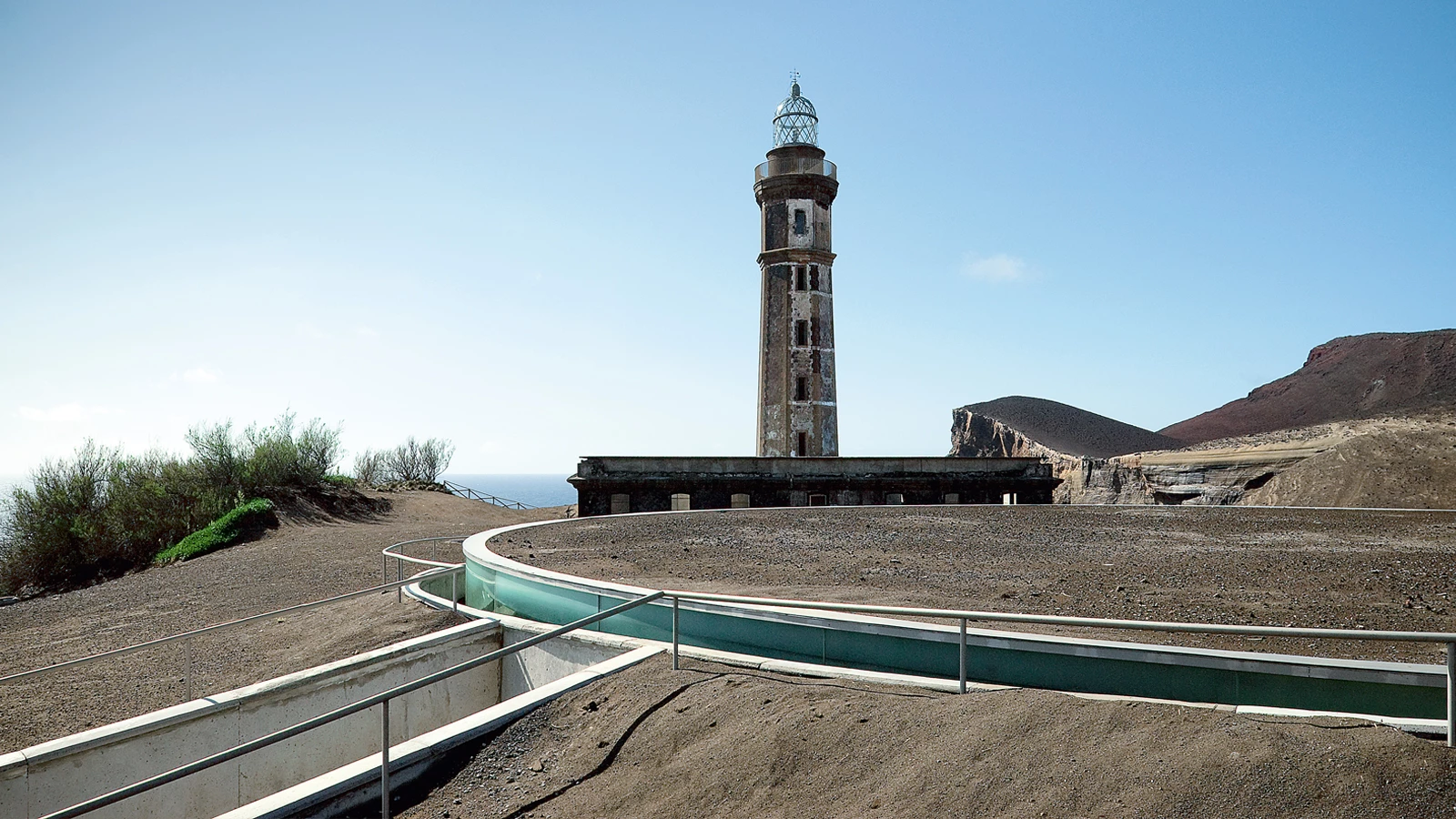Volcano Interpretation Center in Capelinhos
Nuno Ribeiro Lopes- Type Culture / Leisure
- Material Concrete
- City Capelinhos
- Country Portugal
- Photograph Fernando Guerra FG+SG


The volcanic eruption of 1957 transformed the landscape of the island of Fayal in the Azores, burying the lighthouse that stood on the western tip of the island and opening up a new and important chapter in the scientific understanding of underwater volcanoes.
This interpretation center tries to cast light on these events preserving what was left of the lighthouse and transforming the landscape to harbor an underground museum. The trip proposed to visitors starts from a circular foyer, of 25 meters in diameter, which is accessed from a long descending ramp. The lobby, which takes up the space of a disappeared cul-de-sac, is presided by an impressive central column, round and mushroom-shaped, like a large structural umbrella. The roof is slightly elevated over the level of the terrain, letting light come in through an intermediate space: a luminous circular band that emphasizes the weightless image of the concrete shell. On top, the slab is covered with rammed earth, creating a partly artificial, partly natural object that recalls land art interventions. The itinerary ends in a steel and glass cube by the lighthouse, which has an independent access and is meant to function as a lookout.
Cliente Client
Governo dos Açores.
Secretaria Regional do Ambiente e do Mar
Arquitecto Architect
Nuno Ribeiro Lopes
Colaboradores Collaborators
Sara Moncaixa Potes (arquitecta architect); Manuel Baião (delineante draftsman)
Consultores Consultants
Mário Veloso (estructuras, fontanería y saneamiento structural and plumbing engineering); Henrique Leal (instalaciones eléctricas, de telecomunicaciones y de seguridad electrical, telecommunications and security installations); Luís Andrade (acondicionamiento térmico heating, ventilation and air conditioning); Prospectiva (control de obra quantity surveyor)
Fotos Photos
Fernando Guerra | FG+SG, Sara Moncaixa Potes, Manuel Ribeiro







